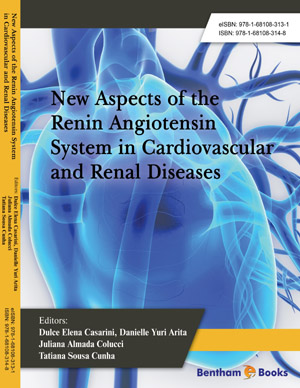Abstract
There is increasing evidence regarding the pivotal role of the intrarenal renin angiotensin system (RAS) in the pathogenesis of hypertension and its independent role in the regulation of interstitial and intratubular fluids. The presence of high intrarenal angiotensin II (Ang II) levels and the localization of Ang II type 1 receptor (AT1R) in proximal and distal nephron segments suggested a physiological role for this receptor. In the collecting duct, luminal AT1R activation directly stimulates the activity of epithelial sodium channel (ENaC), contributing to enhance sodium reabsorption. Several reports have demonstrated the expression of angiotensinogen (AGT) and prorenin/renin in proximal tubules and collecting ducts, respectively. Both, tubular AGT and prorenin/renin are upregulated during Ang II-dependent hypertension despite the suppression of renin in juxtaglomerular cells. The (pro)renin receptor (PRR) is a new member of the RAS. PRR by binding renin or prorenin, enhances renin activity and activates the non active enzyme prorenin. The PRR and its soluble form are increased in the renal tissue and urine of Ang II hypertensive rats; however, the contribution of PRR to enhance renin activity in the distal nephron remains unclear. The presence of angiotensin converting enzyme (ACE), the enzyme that converts Ang I into Ang II in the nephron, along with the augmentation of intratubular AGT, renin and PRR may contribute to additional production of Ang II in the tubular lumen, which enhances sodium reabsorption and high blood pressure.
Keywords: Angiotensin, Angiotensinogen, Angiotensin converting enzyme, Blood pressure, Collecting duct, Cyclic AMP, Cyclooxygenase-2, Hypertension, Intracellular pathways, Kidney, Prorenin, Protein kinase C, Renal medulla, Renin, Sodium, Transport, Urine.





















